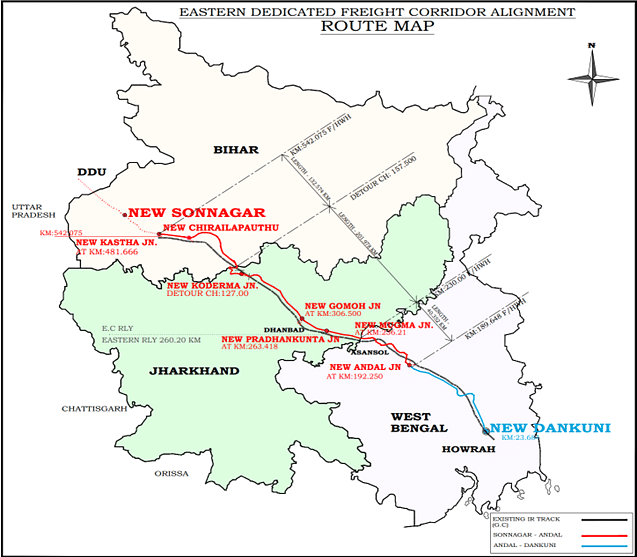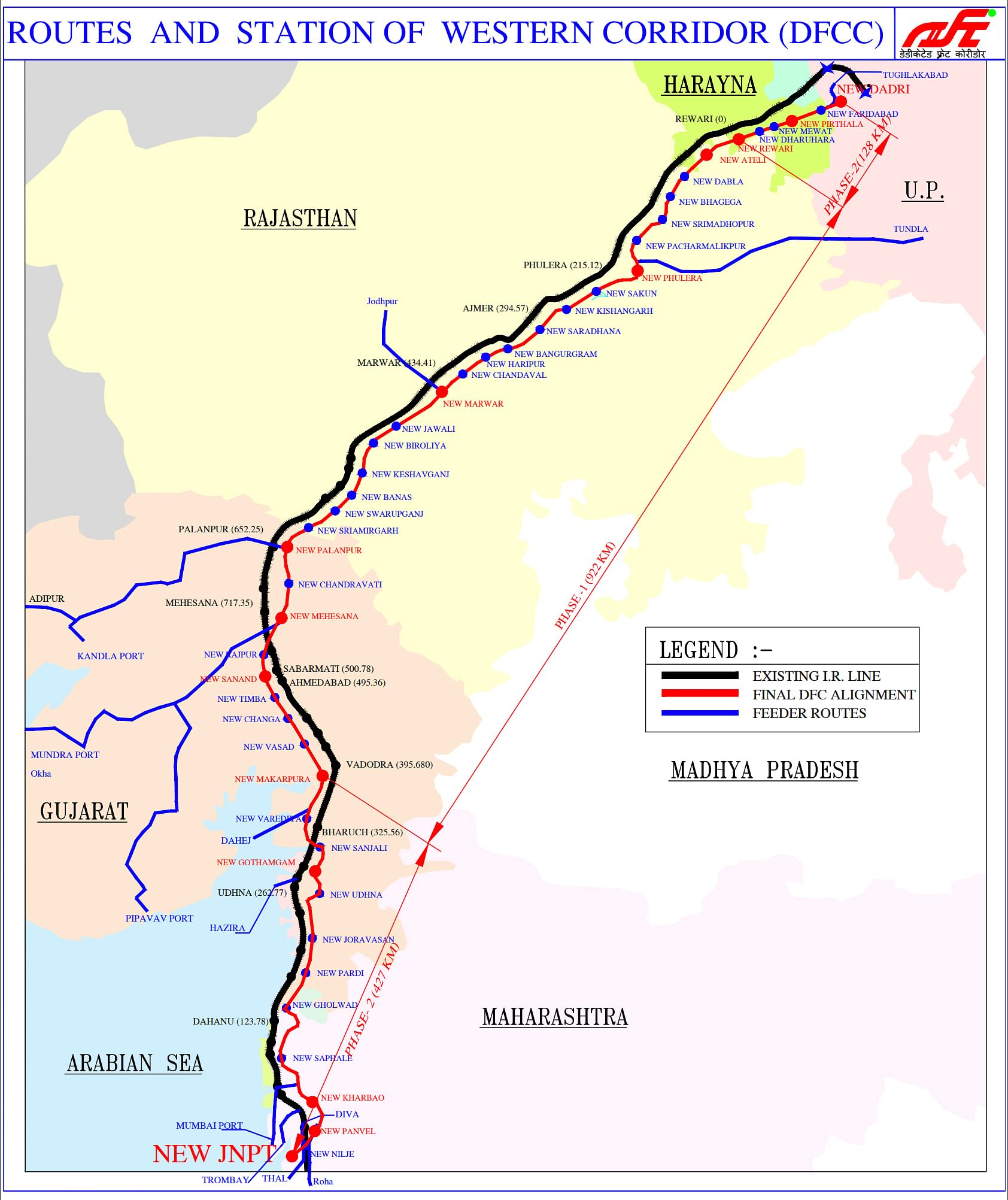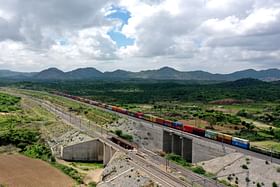The dedicated freight corridors’ infrastructure capacity increase is critical to achieving Indian Railways’ goal of 3,000 MT freight loading by 2030.
The DFC once constructed will decongest the Railways’ network by moving 70 per cent of goods trains to these two corridors.
Indian Railways has achieved a major milestone by completing the track linking work on the last leg of the Eastern Dedicated Freight Corridor (EDFC) between Sonnagar and Ludhiana section.
This development will enable seamless connectivity for freight trains, once it is commissioned.
The Ministry of Railways announced on Wednesday (2 August) that the completion of track linking work on the Sonnagar to Ludhiana section marks a significant achievement for the EDFC.
The entire 1,337 route kilometre (RKM) of the EDFC will provide uninterrupted connectivity for freight trains upon commissioning.
Marking a milestone feat, track linking work on the last leg of EDFC between Sonnagar and Ludhiana section has been completed. Upon Commissioning, the entire 1337 RKM of Eastern #DFC will provide seamless connectivity to freight trains. pic.twitter.com/3TBHUQ3ZBS
— Ministry of Railways (@RailMinIndia) August 2, 2023
The Ministry of Railways recently provided an update on the progress of the dedicated freight corridors project in India. As of June 2023, 77.2 per cent of the project has been commissioned, according to the ministry’s announcement.
The Ministry also revealed that 1,046 km of the Western Dedicated Freight Corridor (WDFC) and 1,150 km of the EDFC have been commissioned. Additionally, 454 out of 543 major bridges have been completed as part of the project.

Prime Minister Narendra Modi flagged off the DFC network’s inaugural train on 12 December, 2020.
DFC is critical to the National Logistics Policy to lower logistics costs from 15 per cent of the GDP, to 8 per cent by 2030.
DFC’s freight infrastructure capacity increase is critical to achieving Indian Railways’ goal of 3,000 MT freight loading by 2030.
Eastern Dedicated Freight Corridor (EDFC)
The EDFC spans 1,337 km from Sahnewal near Ludhiana in Punjab, crossing through Haryana, Uttar Pradesh, and terminating at Sonnagar in Bihar.
As part of this freight corridor, the overall 538 km stretch between Sonnagar in Bihar and Dankuni in West Bengal was proposed to be executed under the public-private partnership (PPP) mode, since the beginning.
This stretch was intended to be the apex of the Railways’ monetisation efforts, providing private-sector players access to the corridor’s traffic.

For the 371 km stretch between Sonnagar (Bihar) and Andal (West Bengal) — proposed to be the first PPP project — the Dedicated Freight Corridor Corporation of India (DFCCIL) had reworked the proposal to attract bidders for the Rs 12,000-crore project and de-risk the private concessionaire.
The project was revised to be developed via a design, finance, build, operate and maintain and transfer model.
Western Dedicated Freight Corridor (WDFC)
The WDFC, connecting Dadri in Uttar Pradesh to Jawaharlal Nehru Port (JNPT) in Mumbai, passes through five states — Uttar Pradesh, Haryana, Rajasthan, Gujarat and Maharashtra.
The western corridor covers a distance of 1,504 km through double line electric (2 x 25 KV) track from JNPT to Dadri via Vadodara-Ahmedabad-Palanpur-Phulera-Rewari. The Western DFC is proposed to join the Eastern DFC at Dadri.
Western DFC would mainly cover Rajasthan (565 km), Maharashtra (177 km), Gujarat (565 km) Haryana (177 km) and about 18 km in Uttar Pradesh.

Alignment has been generally kept parallel to existing lines except provision of detour at Diva, Surat, Ankleshwar, Bharuch, Vadodara, Anand, Ahmedabad, Palanpur, Phulera and Rewari. However, it is entirely on a new alignment from Rewari to Dadri.
The DFC once constructed will decongest the railways’ network by moving 70 per cent of goods trains to these two corridors.


